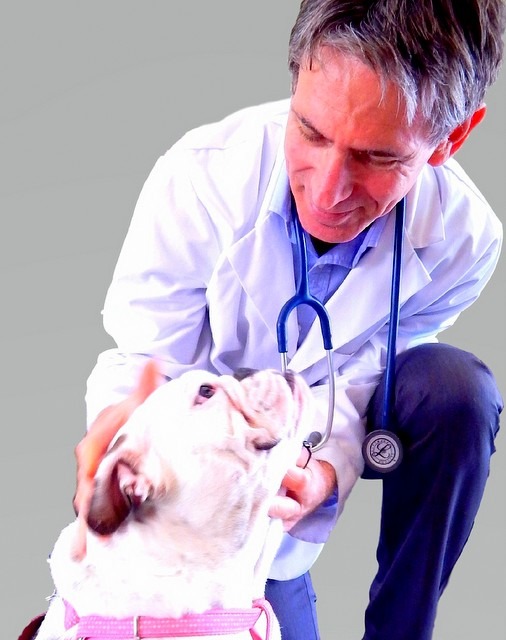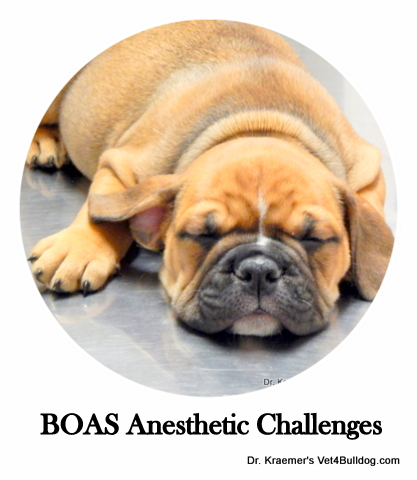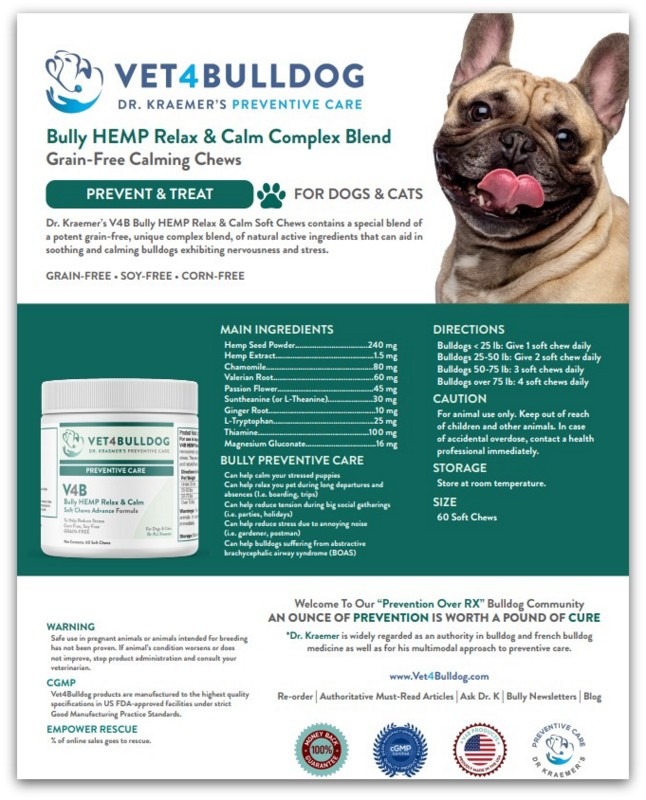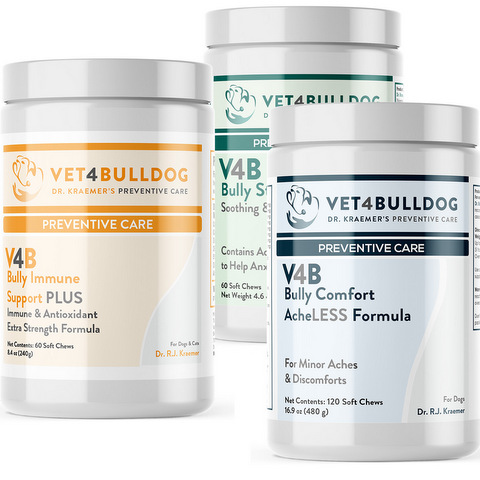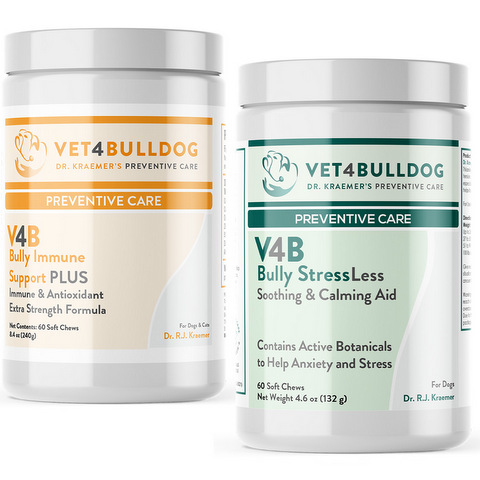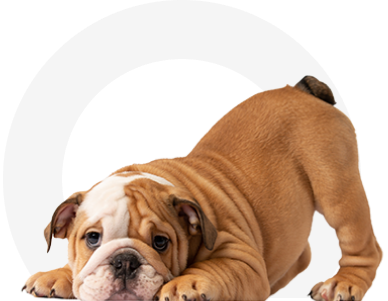Subject: RE: Bulldog Anesthetic Sudden Death
Dear Dr. Kraemer, my family and I are heartbroken and devastated. Our beloved 2-year-old French bulldog, Lola, is gone. We took her in for a routine spay, and the vet assured us she was healthy. But then, we received the call that she had passed away during surgery.
We are struggling to understand how this could have happened. Could you please review her medical records and help us understand what might have gone wrong?
Sincerely, Tim & Janet 💔🐾
Anestesia Risks in Bulldogs and French Bulldogs Introduction:
The breeds of English Bulldog and French Bulldog pose a considerable anesthetic challenge due to their inherent risk factors, most notably their brachycephalic skull shape and narrowed airways make them prone to breathing difficulties, even in normal circumstances.
Bulldogs under general anesthesia face a significant challenge in relaxing the upper respiratory muscle because they cannot passively maintain open airways like other breeds. Consequently, they necessitate active compensatory hyperactivity of their remaining upper airway muscles to ensure steady breathing.
This heightened demand on their respiratory system increases the risks associated with anesthesia in bulldogs.
MUST DO ANESTHESIA SAFETY IN BULLDOGS:
Following this, his short list is imperative to guarantee their safety throughout the procedure.
➡️ Pre-anesthesia exams and tests
➡️ Anesthetic team training
➡️ Vigilant monitoring
➡️ Specialized techniques
➡️ Customized bulldog anesthetics
➡️ Endotracheal intubation
Anesthesia in bulldogs and French bulldogs is riskier than in other dog breeds
Bulldog Anestesia Safty 5 X MUST KNOW
- Bulldogs are a high anesthetic risk that requires expertise and experince
- Bulldogs suffering from BOAS are at a higher risks
- Screening tests, Pre-oxygenation, customized protocol, intubation, and monitoring are critical
- The post-anestesia recovery period is the most dangerous for the inexperienced team
- Prevention and care include Dr. Kraemer’s Bulldog Airway Bundles.
Our Bulldog Community Prefer Prevention Over RX
Anesthesia Safety in Bulldogs and Fr. Bulldog BOAS Warning ⚠️
Given the additional narrowing and obstruction in their already compromised airways, bulldogs and French bulldogs affected by Brachycephalic Obstructive Airway Syndrome (BOAS) encounter heightened challenges during anesthesia.
Bulldog BOAS further complicates the anesthetic challenges.
Which BOAS Poses The Most Risks to Bulldogs Undergoing Anesthesia?
The most common BOAS conditions adversely impacting bulldog anesthesia are:
#1🚨 ELONGATED SOFT PALATE RISK TO ANESTHESIA:
Bulldogs with BOAS often possess abnormally long soft palates that can partially obstruct the airway, especially when relaxed during anesthesia.
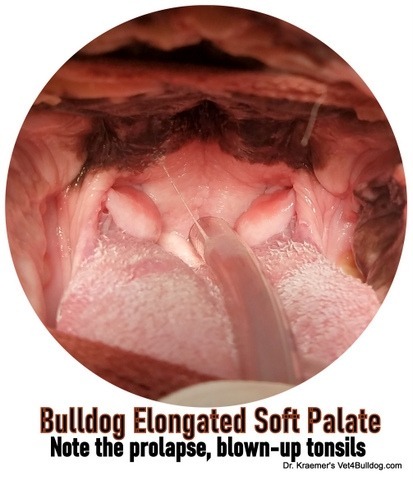
#2🚨 STENOTIC PINCHED NOSE RISK TO ANESTHESIA:
Narrowed collapsed pinched nostrils further limit air intake, increasing the effort required for breathing.
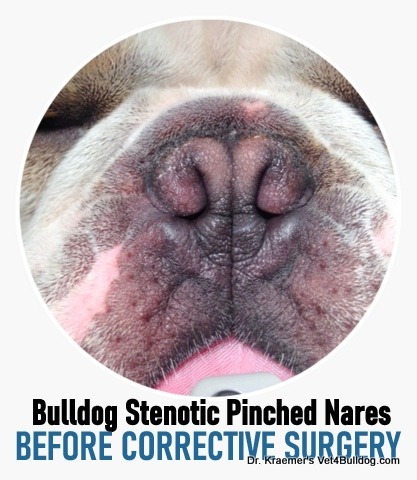
#3🚨 EVERTATED LARYNGEAL SACCULES RISKS:
Chronic BOAS can lead to everted air sacs in the larynx, which will exacerbate airway obstruction.

What Anesthesia Complications Are Due to Bulldog BOAS?
Common complications during anesthesia due to bulldog brachycephalic obstructive airway syndrome, include:
➡️ Hypoxia: inadequate oxygen intake due to the increased effort required for breathing.
➡️ Hypercapnia: accumulation of carbon dioxide in the blood due to difficulty exhaling.
➡️ Respiratory failure: a complete inability to breathe effectively.
➡️ Reflux and regurgitation: These factors combined can increase the risk of aspiration pneumonia, a life-threatening condition where lung inflammation occurs due to the inhalation of foreign material like stomach acid or food particles.
Therefore, bulldogs and French bulldogs with BOAS necessitate more active respiratory compensation than those without the syndrome. Due to these considerations, the veterinary anesthetic team must take extra precautions when anesthetizing bulldogs and French bulldogs with BOAS.
🚨 Bulldogs and French bulldogs suffering from elongated soft palate, and stenotic nares, are at higher anesthetic risk than other bulldogs.
#1 Bulldog Anesthesia High Vagal Tone Risks and BOAS
Brachycephalic dog breeds like bulldogs and French bulldogs, especially those suffering from BOAS, tend to exhibit a higher vagal tone compared to other breeds. The vagus nerve, a key component of the parasympathetic nervous system, significantly influences functions such as:
- digestion
- heart rate
- respiration
An increased vagal tone may result in a
- decelerated heart rate
- heightened gastrointestinal motility
- bronchoconstriction.
#2 BULLSOG ANESTHESIA AND VASOVAGAL REFLEX:
The vasovagal reflex is defined as a reaction prompted by an increased vagal tone and a sudden drop in blood pressure.
Symptoms associated with the vasovagal reflex include
- nausea
- vomiting
- fainting
- bradycardia: slow heartbeat
#3 BOAS and ASSOCIATED GI COMPLICATIONS:
Bulldogs are susceptible to a range of respiratory and digestive complications due to their narrowed airways and anatomical constraints.
Symptoms such as vomiting and gagging are common in bulldogs who suffer from brachycephalic obstructive airway syndrome (BOAS).
They are often provoked by:
- enhanced vasovagal reflux
- increased inspiratory effort
- swallowing difficulties.
Why Bulldog Anesthesia is Associated With Aspiration Pneumonia?
During episodes of retching, gagging, or vomiting, there is a substantial risk of inhaling foreign material, potentially leading to aspiration pneumonia. This condition poses a life-threatening threat due to the inflammation and infection it can cause in the lungs.
Managing regurgitation, reflux, retching, gagging, and vomiting is paramount before any anesthesia procedure in bulldogs, particularly those with brachycephalic syndrome (BOAS).
The relaxation of the upper respiratory muscle during anesthesia further diminishes the capacity to clear aspirated material, heightening the risk of pneumonia.
BOAS bulldogs with their narrowed airways and compromised cough reflex, are particularly vulnerable to aspiration and its severe consequences.
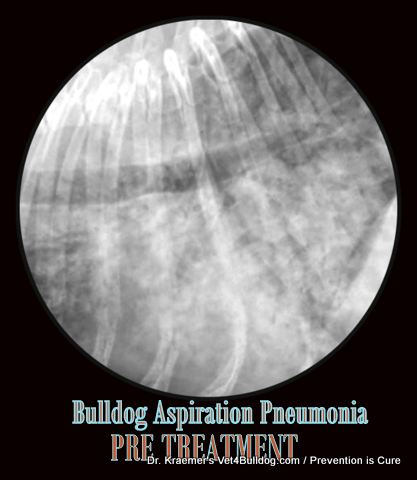
Anesthesia in Bulldogs and Fr. Bulldogs Owners Due Delignet:
Here is a bulldog anesthetic safety shortlist for owners:
1. VETERINARY TEAM
Engaging in a detailed conversation with your veterinarian regarding your bulldog’s anesthetic and recovery considerations is crucial for ensuring a safe and successful outcome. Make sure that the doctor and team in charge of the procedure are trained and experienced with the bulldog breeds.
2. MEDICAL HISTORY
Provide information about your bulldog’s age, health history, and any existing breathing issues. Discuss any past anesthetic experiences your bulldog may have had and any assoicated complications encountered.
3. ANESTHETIC PROTOCOLS:
Ask about the specific anesthetic protocols and medications planned for your bulldog’s procedure. Ensure that the team has experience with brachycephalic breeds and is aware of the associated risks, such as:
- Hypoventilation
- BOAS
- Laryngeal collapse
- Gagging and aspiration
Discuss the planned monitoring equipment and techniques to ensure your bulldog’s safety during the procedure and recovery.
4. PAIN MANAGEMENT
Understand the post-operative care plan, including strategies for pain management and monitoring for potential issues like extubation, respiratory distress, and vomiting. Discuss the discharge instructions thoroughly, and ensure you are well-prepared to support your bulldog’s recovery at home.
5. OPEN COMMUNICATION AND TRUST
Feel empowered to ask questions and express any concerns you may have. Clarify any ambiguous information, and ensure you have a comprehensive understanding of the procedure’s risks and benefits.
Proactive communication and informed decision-making are key to minimizing risks and enhancing your bulldog’s comfort and safety during and after the anesthetic procedure. This will help you approach the event with confidence and peace of mind.
Choose a veterinarian and surgical team you trust—one that can offer personalized care and address your specific queries with expertise.
Oxygen Impact on Bulldog Anesthesia Safety:
Dr. Kraemer’s “Bully Anesthetic Protocol” is a proactive approach to address the specific challenges these brachycephalic breeds face during anesthesia.
1. BOAS Pre-Oxygenation:
Bulldogs, and especially those with BOAS, often have compromised airways and reduced respiratory efficiency. Pre-oxygenation with 100% oxygen helps increase the oxygen reserves in their blood, preparing them better for the potential decrease in oxygen intake during anesthesia.
Pre-Oxygnation help prevent hypoxia (oxygen deficiency) and its associated complications.
2. Oxygen cage post-anesthesia:
Recovery from anesthesia can be challenging for bulldogs due to lingering respiratory depression and airway difficulties. Providing supplemental oxygen in a cage can further support their oxygen levels and help them breathe more comfortably during this critical period.
This can minimize the risk of respiratory distress and hypoxemia.
What is Dr. Kraemer’s Bulldog Anesthesia Custome Protocol
To ensure your bulldog’s safety and comfort, it is critical to address the distinctive challenges and vulnerabilities encountered during anesthesia by brachycephalic breeds
Dr. Kraemer’s protocol emphasizes the importance of:
1. Tailoring Anesthesia for Brachycephalic Breeds:
Recognizing the unique needs of bulldogs and adjusting the anesthetic plan accordingly to ensure their safety and well-being.
2. Proactive Respiratory Support:
Utilizing strategies like pre-oxygenation and post-operative oxygen therapy to prevent complications and promote a smooth recovery.
3. Individualized Care:
Adapting the protocol to each bulldog’s specific health status and anesthesia needs.
While no medical procedure can guarantee 100% success, your veterinarian’s commitment to a specialized protocol for bulldogs shows a commendable level of awareness and care.

4. Vomiting and Laryngeal Edema Anesthetic Precautions:
Bulldogs are prone to vomiting and regurgitation, especially due to compromised breathing and relaxed upper respiratory muscles during anesthesia. To address these risks, our recommended protocol includes the following measures:
💉Antiemetics and Antinausea Medications: These medications are administered to suppress nausea and vomiting, effectively reducing the associated risks.
💉Anti-inflammatories: Swelling of the larynx can further obstruct the already narrowed airway in bulldogs. The protocol may include short-acting steroids and anti-inflammatory medications to manage edema and swelling, ensuring a safer procedure.
5. Endotracheal Intubation:
The placement of a breathing tube directly into the trachea helps bypass the upper airway and ensures adequate ventilation.

6. Anesthesia Safty and Pain Management:
Proper pain control is essential not only for the bulldog’s comfort but also to minimize the requirement for deeper anesthesia, which can further depress their respiratory system. The protocol likely includes customized pain medication for the specific procedure.
7. Anesthesia Safty and Anti-Anxiety Medication:
Anesthesia can be particularly stressful for bulldogs with respiratory difficulties. Anxiety can worsen these issues, making the situation more challenging. Administering anti-anxiety medication can help calm your bulldog, promoting a smoother and safer anesthetic experience.
8. Bulldog Anesthesia Safety ECG & LAB:
Conducting pre-anesthetic screening tests demonstrates a strong commitment to minimizing risks and ensuring the safety of bulldogs, especially those with special needs, during anesthesia. Here’s a breakdown of the specific tests and their benefits:

A. Heart-Healthy Screen Electrocardiogram (ECG):
This test evaluates the heart’s electrical activity, identifying potential rhythm abnormalities or underlying heart disease. Early detection of heart issues is crucial before anesthesia, as complications could be amplified during the procedure.
Cardiologist Report: Having a cardiologist interpret the ECG and provide a professional evaluation adds an extra layer of assurance and expertise, particularly for bulldogs predisposed to certain heart conditions.
B. Pre-Anesthetic Blood and Urine Lab Work:
This examination of blood and urine values offers vital information about your bulldog’s overall health and organ function. It can uncover issues such as anemia, kidney or liver disease, and electrolyte imbalances, impacting anesthesia safety and recovery.
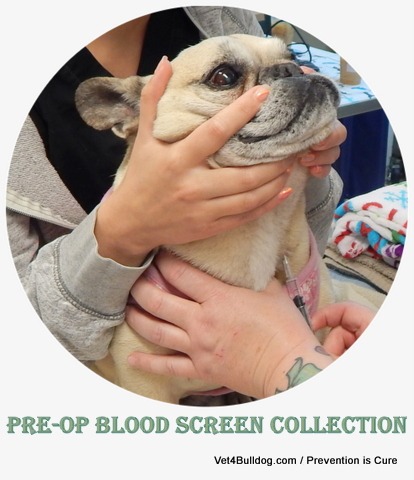
C. Blood Pressure Monitoring
Blood pressure is crucial for bulldogs, particularly those with potential respiratory difficulties. Monitoring blood pressure during anesthesia is essential, as elevated blood pressure can worsen existing breathing problems and increase risks. Knowing your bulldog’s baseline blood pressure and closely monitoring it allows for prompt intervention if significant changes occur, ensuring safer anesthesia management.

Chest Radiographs for BOAS Cases:
In bulldogs with Brachycephalic Obstructive Airway Syndrome (BOAS), chest X-rays offer valuable insights into the severity of airway narrowing and associated anatomical abnormalities.
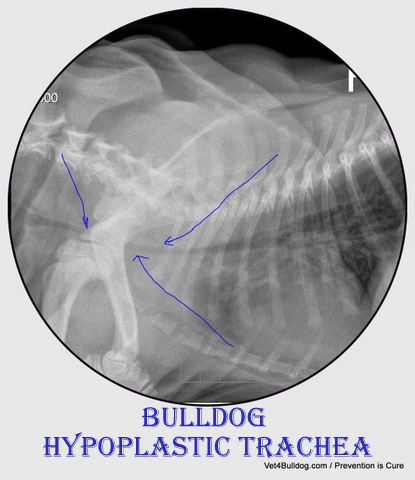
Bulldog and Fr. Bulldog Anesthesia Risks & Safty Summary:
✅ EARLY IDENTIFICATION: Identifying pre-existing health concerns early allows for the optimization of the anesthetic plan and the implementation of necessary supportive measures during the procedure.
✅ MEDICAL TEAM: A skilled medical team tailors the anesthetic approach and applies specific strategies to manage your bulldog’s breathing throughout the procedure and recovery.
✅ PRE-ANESTHESIA SCREENING: Dr. Kraemer’s comprehensive pre-anesthetic screening test recommendations reflect a meticulous and responsible approach to bulldog anesthesia. These thorough evaluations offer several key benefits
✅ ADDRESSING PRE-ANESTHESIA MEDIAL CONDITIONS: Identifying and managing pre-existing conditions and potential complications significantly reduces the risks associated with anesthesia, ensuring improved safety and comfort for bulldogs by tailoring the anesthetic approach to their specific needs.
Bulldog and Fr. Bulldog Anesthesia TIPS & WARNINGS:
Below are selective bulldog anesthesia tips and warnings courtesy of Dr. Kraemer
#1 🩺 SEVOFLURANE TIP:
Advantages of sevoflurane for bulldogs:
- Swift induction and recovery
- Reduced respiratory depression
- More predictable depth of anesthesia
Most veterinary hospitals use isoflurane for anesthesia due to its lower cost. However, Dr. Kraemer’s choice of sevoflurane highlights several key aspects:
✅ Prioritizing Patient Safety and Well-Being: Choosing sevoflurane, despite its higher cost, reflects a commitment to the highest safety standards for bulldogs, ensuring their well-being and minimizing risks associated with anesthesia.
✅ Customizing Anesthesia to Breed-Specific Needs: Recognizing the unique challenges of bulldogs and adapting the anesthetic plan to meet their specific needs underscores a tailored approach to minimize risks and optimize outcomes.
✅ Continual Improvement in Veterinary Practice: Using sevoflurane demonstrates Dr. Kraemer’s dedication to advancing veterinary care by incorporating the latest and safest anesthetic medications, providing the best possible care for his patients.
Sevoflurane is regarded as the gold standard in human anesthesia and is considered the safest and most reliable inhalant anesthetic available.
#2 🩺 BULLDOG ANESTHESIA SAFETY MONITORING TIP:
During the anesthetic procedure, all our bulldogs are carefully supported and monitored.
- IV FLUID: On a constant IV fluid drip to maintain circulatory hydration and perfusion.
- ECG MONITOR: Your bulldog will be attached to an ECG
- TEMPERATURE MONITOR: Provide a heated table and heated blankets
- HEART RATE MONITOR
- PULSE OXIMETER: monitoring tissue oxygen saturation.
- CAPNOGRAPHY: monitoring of the concentration or partial pressure of carbon dioxide (CO).
- RAISPERTORY RATE MONITOR
- PAIN-CONTROL: pain control helps to maintain safety and comfort.
Among others, pain management helps maintain optimal blood pressure, heart rate, and respiration
#3 🩺BULLDOG ANESTHESIA SAFETY RECOVERY TIP:
After anesthesia, in contrast to other breeds, we keep the endotracheal tube in place for as long as we can. Bulldogs will tolerate the tube even if it is semi-awake and this will ensure patent airways till the patient is fully awake and breathing on his own
#4 🩺 BULLDOG ANESTHESIA SAFETY TEMP TIP:
For post-anesthesia home monitoring, it’s important to keep your bulldog in a well-ventilated area. If you notice excessive panting, check their temperature. If their temperature exceeds 100°F, turn on a fan and direct it toward your bulldog to help cool them down.
Your bulldog gums and tongue color rule of thumb: Pink=Good, Blue=Bad
#5 🩺 CALM & RELAX ANESTHESIA SAFETY TIP:
At home, keep your bully relaxed and stress-free. If necessary, ask for tranquilizers.
#1 ⚠️ BOAS WARNING:
During the induction process, we carefully examine the palate and saccules, particularly in cases of Brachycephalic Obstructive Airway Syndrome (BOAS). If any abnormalities are detected, they are promptly addressed to prevent potential post-anesthesia complications, such as laryngeal edema.
For elective surgeries, they may be performed on the same day as the BOAS surgical correction or rescheduled for approximately two weeks later, depending on the specific circumstances.
#2 ⚠️ ASPIRATION PNEUMONIA WARNING:
If there is a history of gagging, vomiting, and, of course, coughing, we always take chest X-rays before putting your bully “under” to rule out pneumonia (see our chapter on Aspiration Pneumonia).
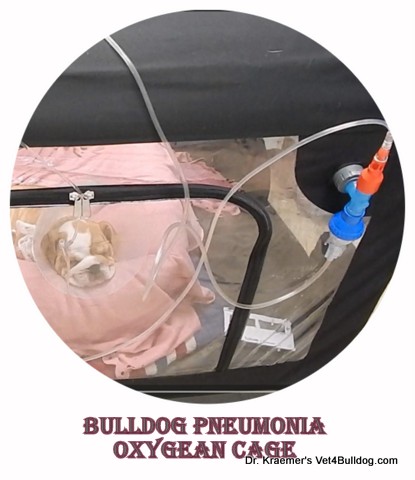
#3⚠️ BULLDOG ANESTHESIA COMPLICATIONS WARNINGS:
Contrary to what you might believe, my biggest concern is not the duration of time that your bully is under anesthesia but rather the post-anesthesia recovery stage.
Complications like laryngeal edema, pneumonia, and pulmonary and cardiac irregularities, typically erupt after extubating and are potentially deadly.
We always keep a “bulldog-certified” staff member seated next to your bulldog for the first hour of recovery to constantly monitor vital signs:
- color
- respiration
- heart rate
- temperature
#4 ⚠️BULLDOG POST-ANESTHESIA HOME CARE WARNING:
I don’t recommend keeping bulldogs unattended for the first 12–24 hours after an anesthetic procedure

Recomended by Owners Approved by Bulldogs



